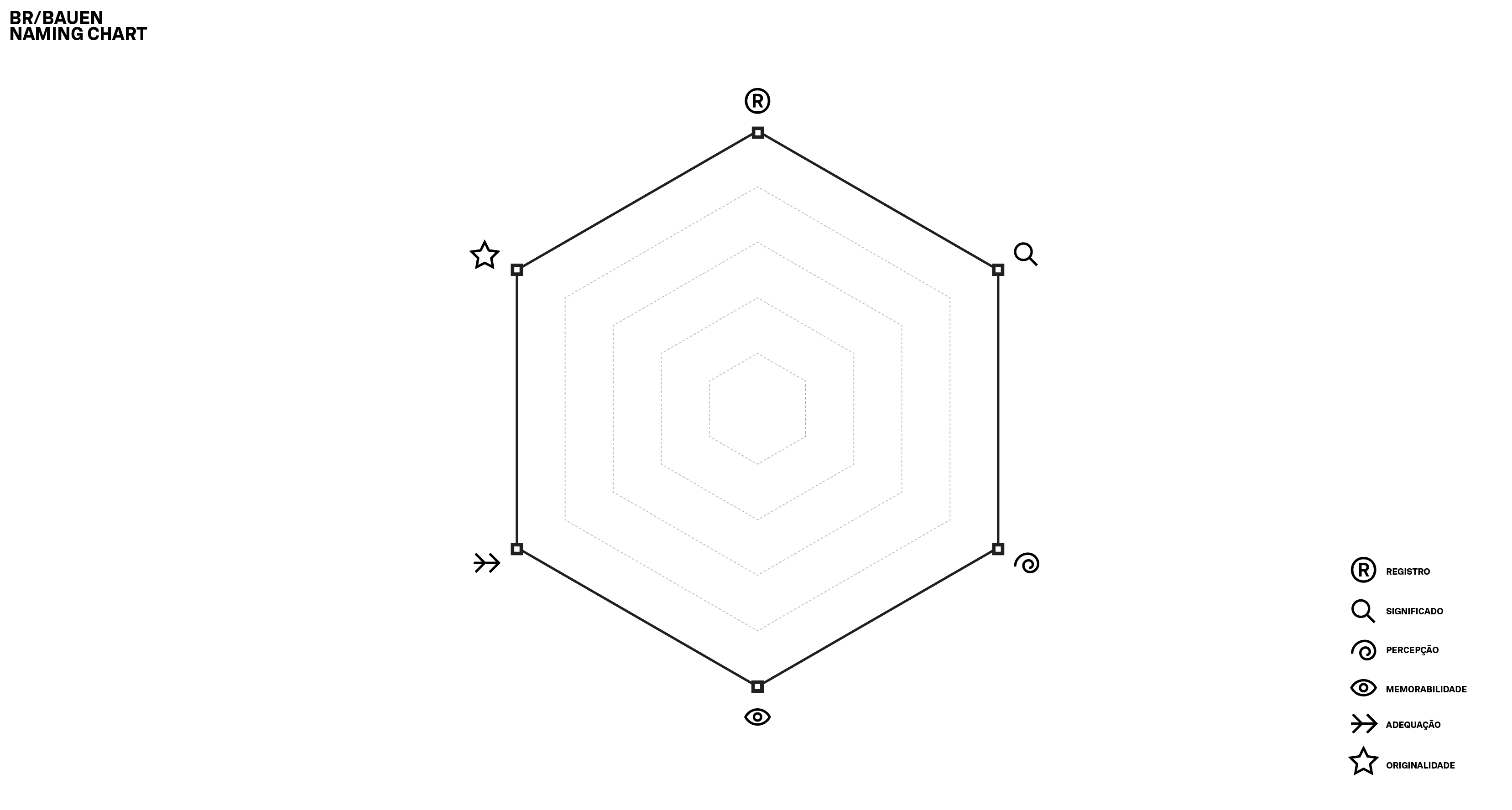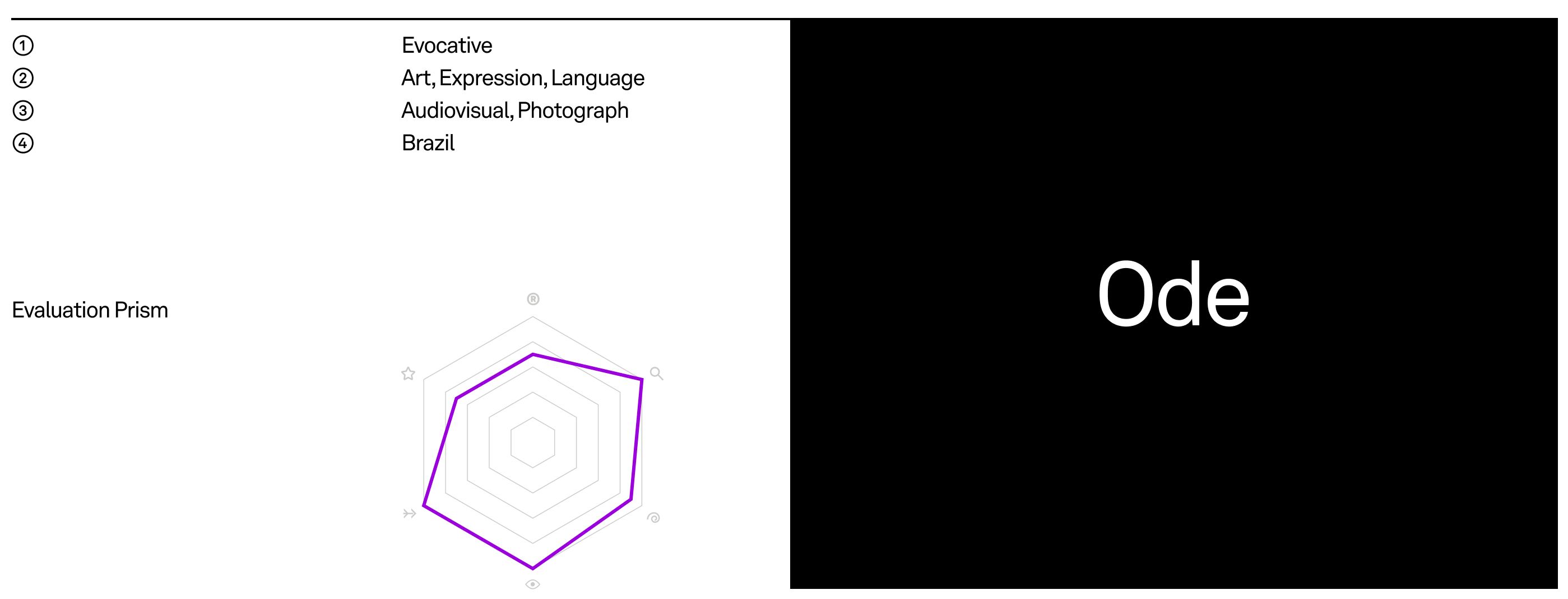Creating brand names came naturally for us, having focused on using design to build brand perception — with design as a method, being multidisciplinary and capable of materializing ideas; we embraced this ability to design names, sometimes when we started a project whose name could be harmful to the perception of the brand, or even when there was no defined name for the brand at hand.
As we specialized in Brand Identity, we understood that a name is a beacon of light in developing a brand identity, therefore, thinking of names has become fundamental; whether to create a new name or to evaluate the ability of the previously chosen name to meet the needs of the brand. Today we understand that this is completely contextual and depends on several factors. The process begins with a concise and analytical assessment of perceptions, and we move on to the creation of names, whether for the Brazilian or the international market.
In this context, we have 3 main lessons learned:
1. The name is a brand’s main asset:The name has the responsibility to identify the brand even before there is a graphic representation for it; it’s verbal repetition is more recurrent than visual and in it lies the greatest memory association. Therefore, it must be memorable within its context.
2. The name is a brand’s positioning identifier:
The appropriate name for the brand’s audience builds a more cohesive path for communication. How many cases of inappropriate names for transmitting the wrong perception do we not see daily?
3. The name is substantial for a brand’s narrative:
A strategically designed name helps to tell a meaningful story, building attraction and connection to your audience – with considerably less effort and investment.
How to create a ‘good name’?
First of all, we have to understand that a brand name’s mission is to contextualize the balance between these 3 strategic factors:
A. Behavior
B. Perception
C. Economic sector
Our approach over the past 5 years leads us to believe that there is no recipe that guarantees results, nor there is a single quality for a good name. The bigger picture matters most, and understanding the evaluation criteria gives a better chance of arriving at desirable results.
So, how to evaluate a good name?
According to the strategic factors reported, we evaluate the following criteria:
1_Registrations;
2_Meaning;
3_Perception;
4_Memorability;
5_Adequacy to Strategy;
6_Originality;
Whenever we evaluate internally or present name options to clients – the need arises to compare the qualities of each name in order to establish which name has the most potential upon evaluated criteria.
For the criteria to be taken into account effectively, we realized that it is necessary to graphically visualize the qualities of the names in order to compare them, without any stylistic or aesthetic indications that may influence the choice – ensuring that the evaluation is mainly perceptual, but that the comparison of the criteria is rational.
Our solution is to use a ‘radar’ whose function is to facilitate our comparative checklist, on a scale of 0 to 5 that makes it possible to establish the ‘graphic spot’ that measures the strength of the variables being evaluated.
We evaluate a total of 6 criteria, and the relevance defined for each of them depends on the definitions previously made in view of the balance between Behavior, Perception, and Economic Sector.

Registration:
The main eliminator in the selections and searches, the registration is what allows the legal protection and the determinants of exclusivity regarding the chosen name. Names with a low registration score are acceptable when the territory in which the brand operates is small or when there is no plan for future brand elasticity. Names with a high score are necessary when your activity aims to reach a very large territory and the brand will be an asset of several products / services.
Meaning:
A meaningful name can create an easy connection with your audience, thus communicating the brand positioning and tone of voice with agility and clarity. Names with a high score of meaning may have a narrative path already pre-established, while names with a low score of meaning may have more space to build their own narrative and with an original personality. It is worth saying in this topic that, for a long time, meaning mattered little to consumption decisions; Today, in the age of communication, a name that means something (either by the historical context or by the language created) builds a more effective value, because the concern with the essence of a brand is as significant as the quality of its product.
Perception:
When we reach the shortlist, we evaluate the name based on people’s perceptions, conducting qualitative research through groups and individual conversations. With this evaluation, we can measure the connection with the public, the level of memorability, and also its adequacy with the developed brand strategy.
A lower or higher level of perception in this phase of the project becomes a great input for the continuity of the project, when we are going to visually tangible the brand identity. With the discovery of name perception, the measured points become equalization objectives within the visual identity, where we have the chance to completely balance the perception of a brand.
Memorability:
To determine the memorability of a name, we analyze the functional and strategic factors of brand recall: easy or difficult to speak, spell, write, understand, etc. The context and suitability of each project distinguishes how the name should be remembered. A small, quick and easy name can be the solution for many projects, but within a context of sophistication or in a very exclusive niche of public, for example, ‘difficult’ names can enable greater recall.
In addition to the function within the verbal language, the visual characteristics of the name are also put into practice, as the aesthetics and graphic form of a name are suited to different strategies (a name with few letters usually offers more space within a package, for example).
Adequacy to Strategy:
Another evaluation that manages to show us a response to the equalization of verbal and visual identity, is the analysis of the adequacy of the strategy; This interpretation is mainly answered by the perception research carried out. At this point, a name with high suitability is shown as an effective and “accurate” name for the project’s objectives. This evaluation (being high or low) allows us to have a visualization of points to be studied for the development of the brand identity completely. In names with high suitability, they can also be worrying, because a name can end up becoming too “thematic” or too specific for brand futures that we don’t see. A name with low suitability is also positive when elasticity and profile performance are less important.

Originality:
The originality criteria are actually our principle of creation and guide for every project; Originality guides us to have more protection over the name, more memorability, more appropriateness to the strategy (as it is also original), and so on. Original names have a high level of memorability and are much easier to use, such as the use of the brand on the internet: Unique names get smaller domains and are used on social networks without other profiles that hinder the search for the name. The more original the name, the easier it is for the brand to establish itself.
In this sense, an original result can be achieved through linguistic innovation, the result of a figure of speech in use, or, as in many cases, a new name within the segment in which the brand operates. Brand names that will have broad territory, strong investment in digital communication, or with a great possibility of brand elasticity need solutions that do not collide with existing ones or may generate future conflicts; The names that need less originality are those that have a smaller area of activity and with a direct connection as to the product/service of the brand

To conclude, I invite you to see our Naming Archive, where we selected 35 names to share the experience we have gained over the last 8 years. These are names that we designed between 2015 and the first half of 2020. In addition to the names, we also have a visualization of other data that we interpret to verify our knowledge of names by location and the incidence of name types by the market in which the brands operate.
See the full case in our Behance:
https://www.behance.net/gallery/95897771/Naming-Archive-Vol1

